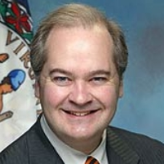The central planning agency for Washington D.C. and the surrounding communities, the National Capital Planning Commission (NCPC) formulates initiatives to guide future development and considers about 180 submitted proposals a year, with the objective of ensuring that projects comply with Commission policies, meet the highest design standards, preserve and enhance historic sites, and safeguard natural resources and open space.
In 1924 Congress established the agency that would eventually evolve into NCPC, the National Capital Park Commission, which was given responsibility for the development and planning of the park, parkway, and playground system in the Washington D.C. area, as well as for acquiring necessary land, preserving forests and other natural scenery, and preventing pollution in rivers and creeks. Two years later, it was re-named the National Capital Park and Planning Commission, and its role was expanded to include comprehensive planning for the capital. In 1952 Congress passed the National Capital Planning Act, which re-named the agency again, and it became the National Capital Planning Commission (NCPC), with the Act designating the NCPC as the central planning agency for the federal government, responsible for all property in the District of Columbia and all federal property in the 2,500 square miles of the National Capital Region (NCR). Congress also reiterated its charge to the NCPC to preserve the region’s natural and historical features. In 1973 the D.C. Home Rule Act delegated the planning responsibility for the District of Columbia to the city’s mayor, and gave the District an advisory role for certain land use decisions, while specifying NCPC as the central planning agency for all federal lands and facilities in the NCR.
The National Capital Planning Commission (NCPC) reviews all plans and projects related to federal development in the National Capital Region, which consists of the District of Columbia and the surrounding counties and cities within the states of Maryland and Virginia. NCPC studies proposals for various entities, including museums, memorials, office buildings, and perimeter security projects, and also analyzes District of Columbia public projects, like proposed street and alley closings and Zoning Commission actions. When raising questions and making decisions, NCPC utilizes The Comprehensive Plan for the National Capital: Federal Elements (pdf), which the agency was mandated to prepare when it was created. NCPC also continually formulates new long-term plans of its own for the area, on topics ranging from addressing ways to meet 21st century transportation challenges to how to ensure that all quadrants of the city benefit from the federal presence. Recent NPCP initiatives include CapitalSpace, an open-space plan for the District of Columbia, and the Monumental Core Framework Plan, a strategy to encourage the location of future memorials and museums around the National Mall. Among its other past plans: Extending the Legacy: Planning America’s Capital for the 21st Century, Memorials and Museums Master Plan, and the National Capital Urban Design and Security Plan (pdf). The Commission is also required to prepare, adopt, and amend a capital improvements program every year that contains recommendations to the Office of Management and Budget and other federal agencies and departments on proposed land acquisitions and development projects that will be considered for funding over the next six years. The 12 people on the Commission represent a variety of constituencies, to ensure a balance between local and federal interests: The Washington D.C. Mayor and two citizens he appoints, three citizens the President appoints, the Chairman of the D.C. City Council, and an assortment of other government officials. Once a month, they hold a public meeting to discuss regional planning policy, review development projects, and address concerns from the public. Before voting, they consider public testimony, as well as recommendations from the Agency staff, which includes architects, urban planners, and technology experts. Among the laws and authorities NCPC operates under: the National Capital Planning Act, Commemorative Works Act, District of Columbia Zoning Act (pdf), the Foreign Missions Act, International Center Act (pdf), the National Historic Preservation Act (pdf), the National Environmental Policy Act, District of Columbia Home Rule Act (pdf), the Capper Cramton Act of 1930 (pdf), and the Height of Buildings Act of 1910 (pdf).
From the Web Site of the NCPC
Flooding in the Monumental Core
RFK Stadium Site Redevelopment Study
Worthy of the Nation: Washington, DC, from L’enfant to the National Capital Planning Commission
The proposed organizational expenses of the National Capital Planning Commission (NCPC) are provided in its FY 2013 Justification for Appropriation (pdf), as follows:
Personnel Compensation $4,338,000
Personnel Benefits $1,436,000
Rental Payments to GSA $1,421,000
Contracts and Consulting $422,000
Communications, Utilities & Misc. $145,000
Operational Maintenance $70,000
Government Services $37,000
Equipment $25,000
Facilities Maintenance $24,000
Travel & Transportation $22,000
Supplies $21,000
Training and Misc. Expenses $14,000
Printing & Reproduction $2,000
Total Obligations $7,977,000
According to USASpending.gov, during the past decade NCPC has spent $4.3 million on 243 transactions for such services as accounting ($977,337), ADP and telecommunications ($610,394), and miscellaneous professional contracting ($483,000).
The top five recipients of NCPC spending since 2002 are:
1. Capitol Business Solutions Inc. $757,296
2. Aecom Technology Corporation $378,000
3. Technical Specialties Inc. $358,829
4. Xerox Corporation $348,919
5. Washington Metropolitan Area Transit Authority $229,720
Chinese Artist Chosen for MLK Sculpture
Five years and two presidential administrations later, the National Capital Planning Commission (NCPC) hoped the end was near for the controversy surrounding a Washington monument for the late Martin Luther King Jr.
Trouble began in 2007 when the NCPC selected an artist from China, Lei Yixin, and not an African-American to design the MLK sculpture. A prominent human-rights activist who was imprisoned by the Chinese government joined in the criticism, taking Lei to task for creating a statue of Mao Zedong. And organized labor was unhappy, too, once it became known that a handful of Chinese workers were imported to help assemble the 30-foot likeness of the civil rights leader.
The NCPC got some good news when two of King’s children approved of the memorial’s design. Martin Luther King III said Lei did “a good job” capturing his father’s presence, better than many other sculptors who had created other statues of Dr. King. The statue was unveiled in August 2011. And then another controversy arose—a quotation from Dr. King that was carved into the base was shortened so much that its meaning was altered. In January 2012, U.S. Interior Secretary Ken Salazar ordered that it be fixed.
The King Memorial: Dreams at Odds (by Patricia Cohen, New York Times)
MLK Jr. Memorial Confronts Controversy (by Melanie Eversley, USA Today)
The Invisible Building
Congress decided in 2003 to add a visitors center to the Vietnam Memorial in an effort to educate the public about the Vietnam War. But lawmakers didn’t want the new center to overshadow the memorial, so they dictated the center had to be invisible to the eye. That meant putting it underground. Adding to the complexity of the project was the estimated size of the center—about that of a supermarket. Some veterans have entirely opposed the idea of the visitors center.
Pro
The Education Center at The Wall is needed so Americans can have a place to reflect on who we are as citizens, as a people and as a country. Future generations will connect with those individuals who died for their country, ensuring that military heroes’ sacrifices will always be remembered. The center will include a history on American conflicts, from Bunker Hill to Baghdad, to acknowledge the price of freedom.
Con
Some veterans say the Vietnam Wall needs no interpretation, thus no need to build the new center. A large explanatory center would detract from the artistic simplicity of the memorial itself. Since other war memorials in Washington, like those honoring the heroes of World War II and the Korean War, don’t have education centers, why does the Vietnam Wall need one?
Vietnam Visitors Center: How Do You Make A Building Invisible? (by David Alpert, Greater Greater Washington)
Welcome Home: Iraq Veterans To Be Honored at Education Center at the Wall (The Education Center at the Wall)
29 Years Later: An In-Depth Look at the Vietnam Veterans Memorial (by Soren Sorensen)
- Table of Contents
- Overview
- History
- What it Does
- Where Does the Money Go
- Controversies
- Suggested Reforms
- Comments
- Leave a comment



- Latest News
- D.C. Public Schools will Teach all Second-Graders to Ride a Bike
- New Rule in Germany Limits Sales of Sex-Themed E-Books to 10pm to 6am
- What Happened to the 6-Year-Old Tibetan Boy the Chinese Government Kidnapped 20 Years Ago?
- U.S. Ambassador to Turkey Photoshops his Hair Color to Mock Turkish Mayor
- Mystery Artist Calls Attention to Unfixed Potholes by Drawing Penises around Them
The central planning agency for Washington D.C. and the surrounding communities, the National Capital Planning Commission (NCPC) formulates initiatives to guide future development and considers about 180 submitted proposals a year, with the objective of ensuring that projects comply with Commission policies, meet the highest design standards, preserve and enhance historic sites, and safeguard natural resources and open space.
In 1924 Congress established the agency that would eventually evolve into NCPC, the National Capital Park Commission, which was given responsibility for the development and planning of the park, parkway, and playground system in the Washington D.C. area, as well as for acquiring necessary land, preserving forests and other natural scenery, and preventing pollution in rivers and creeks. Two years later, it was re-named the National Capital Park and Planning Commission, and its role was expanded to include comprehensive planning for the capital. In 1952 Congress passed the National Capital Planning Act, which re-named the agency again, and it became the National Capital Planning Commission (NCPC), with the Act designating the NCPC as the central planning agency for the federal government, responsible for all property in the District of Columbia and all federal property in the 2,500 square miles of the National Capital Region (NCR). Congress also reiterated its charge to the NCPC to preserve the region’s natural and historical features. In 1973 the D.C. Home Rule Act delegated the planning responsibility for the District of Columbia to the city’s mayor, and gave the District an advisory role for certain land use decisions, while specifying NCPC as the central planning agency for all federal lands and facilities in the NCR.
The National Capital Planning Commission (NCPC) reviews all plans and projects related to federal development in the National Capital Region, which consists of the District of Columbia and the surrounding counties and cities within the states of Maryland and Virginia. NCPC studies proposals for various entities, including museums, memorials, office buildings, and perimeter security projects, and also analyzes District of Columbia public projects, like proposed street and alley closings and Zoning Commission actions. When raising questions and making decisions, NCPC utilizes The Comprehensive Plan for the National Capital: Federal Elements (pdf), which the agency was mandated to prepare when it was created. NCPC also continually formulates new long-term plans of its own for the area, on topics ranging from addressing ways to meet 21st century transportation challenges to how to ensure that all quadrants of the city benefit from the federal presence. Recent NPCP initiatives include CapitalSpace, an open-space plan for the District of Columbia, and the Monumental Core Framework Plan, a strategy to encourage the location of future memorials and museums around the National Mall. Among its other past plans: Extending the Legacy: Planning America’s Capital for the 21st Century, Memorials and Museums Master Plan, and the National Capital Urban Design and Security Plan (pdf). The Commission is also required to prepare, adopt, and amend a capital improvements program every year that contains recommendations to the Office of Management and Budget and other federal agencies and departments on proposed land acquisitions and development projects that will be considered for funding over the next six years. The 12 people on the Commission represent a variety of constituencies, to ensure a balance between local and federal interests: The Washington D.C. Mayor and two citizens he appoints, three citizens the President appoints, the Chairman of the D.C. City Council, and an assortment of other government officials. Once a month, they hold a public meeting to discuss regional planning policy, review development projects, and address concerns from the public. Before voting, they consider public testimony, as well as recommendations from the Agency staff, which includes architects, urban planners, and technology experts. Among the laws and authorities NCPC operates under: the National Capital Planning Act, Commemorative Works Act, District of Columbia Zoning Act (pdf), the Foreign Missions Act, International Center Act (pdf), the National Historic Preservation Act (pdf), the National Environmental Policy Act, District of Columbia Home Rule Act (pdf), the Capper Cramton Act of 1930 (pdf), and the Height of Buildings Act of 1910 (pdf).
From the Web Site of the NCPC
Flooding in the Monumental Core
RFK Stadium Site Redevelopment Study
Worthy of the Nation: Washington, DC, from L’enfant to the National Capital Planning Commission
The proposed organizational expenses of the National Capital Planning Commission (NCPC) are provided in its FY 2013 Justification for Appropriation (pdf), as follows:
Personnel Compensation $4,338,000
Personnel Benefits $1,436,000
Rental Payments to GSA $1,421,000
Contracts and Consulting $422,000
Communications, Utilities & Misc. $145,000
Operational Maintenance $70,000
Government Services $37,000
Equipment $25,000
Facilities Maintenance $24,000
Travel & Transportation $22,000
Supplies $21,000
Training and Misc. Expenses $14,000
Printing & Reproduction $2,000
Total Obligations $7,977,000
According to USASpending.gov, during the past decade NCPC has spent $4.3 million on 243 transactions for such services as accounting ($977,337), ADP and telecommunications ($610,394), and miscellaneous professional contracting ($483,000).
The top five recipients of NCPC spending since 2002 are:
1. Capitol Business Solutions Inc. $757,296
2. Aecom Technology Corporation $378,000
3. Technical Specialties Inc. $358,829
4. Xerox Corporation $348,919
5. Washington Metropolitan Area Transit Authority $229,720
Chinese Artist Chosen for MLK Sculpture
Five years and two presidential administrations later, the National Capital Planning Commission (NCPC) hoped the end was near for the controversy surrounding a Washington monument for the late Martin Luther King Jr.
Trouble began in 2007 when the NCPC selected an artist from China, Lei Yixin, and not an African-American to design the MLK sculpture. A prominent human-rights activist who was imprisoned by the Chinese government joined in the criticism, taking Lei to task for creating a statue of Mao Zedong. And organized labor was unhappy, too, once it became known that a handful of Chinese workers were imported to help assemble the 30-foot likeness of the civil rights leader.
The NCPC got some good news when two of King’s children approved of the memorial’s design. Martin Luther King III said Lei did “a good job” capturing his father’s presence, better than many other sculptors who had created other statues of Dr. King. The statue was unveiled in August 2011. And then another controversy arose—a quotation from Dr. King that was carved into the base was shortened so much that its meaning was altered. In January 2012, U.S. Interior Secretary Ken Salazar ordered that it be fixed.
The King Memorial: Dreams at Odds (by Patricia Cohen, New York Times)
MLK Jr. Memorial Confronts Controversy (by Melanie Eversley, USA Today)
The Invisible Building
Congress decided in 2003 to add a visitors center to the Vietnam Memorial in an effort to educate the public about the Vietnam War. But lawmakers didn’t want the new center to overshadow the memorial, so they dictated the center had to be invisible to the eye. That meant putting it underground. Adding to the complexity of the project was the estimated size of the center—about that of a supermarket. Some veterans have entirely opposed the idea of the visitors center.
Pro
The Education Center at The Wall is needed so Americans can have a place to reflect on who we are as citizens, as a people and as a country. Future generations will connect with those individuals who died for their country, ensuring that military heroes’ sacrifices will always be remembered. The center will include a history on American conflicts, from Bunker Hill to Baghdad, to acknowledge the price of freedom.
Con
Some veterans say the Vietnam Wall needs no interpretation, thus no need to build the new center. A large explanatory center would detract from the artistic simplicity of the memorial itself. Since other war memorials in Washington, like those honoring the heroes of World War II and the Korean War, don’t have education centers, why does the Vietnam Wall need one?
Vietnam Visitors Center: How Do You Make A Building Invisible? (by David Alpert, Greater Greater Washington)
Welcome Home: Iraq Veterans To Be Honored at Education Center at the Wall (The Education Center at the Wall)
29 Years Later: An In-Depth Look at the Vietnam Veterans Memorial (by Soren Sorensen)
Comments



- Latest News
- D.C. Public Schools will Teach all Second-Graders to Ride a Bike
- New Rule in Germany Limits Sales of Sex-Themed E-Books to 10pm to 6am
- What Happened to the 6-Year-Old Tibetan Boy the Chinese Government Kidnapped 20 Years Ago?
- U.S. Ambassador to Turkey Photoshops his Hair Color to Mock Turkish Mayor
- Mystery Artist Calls Attention to Unfixed Potholes by Drawing Penises around Them





Comments